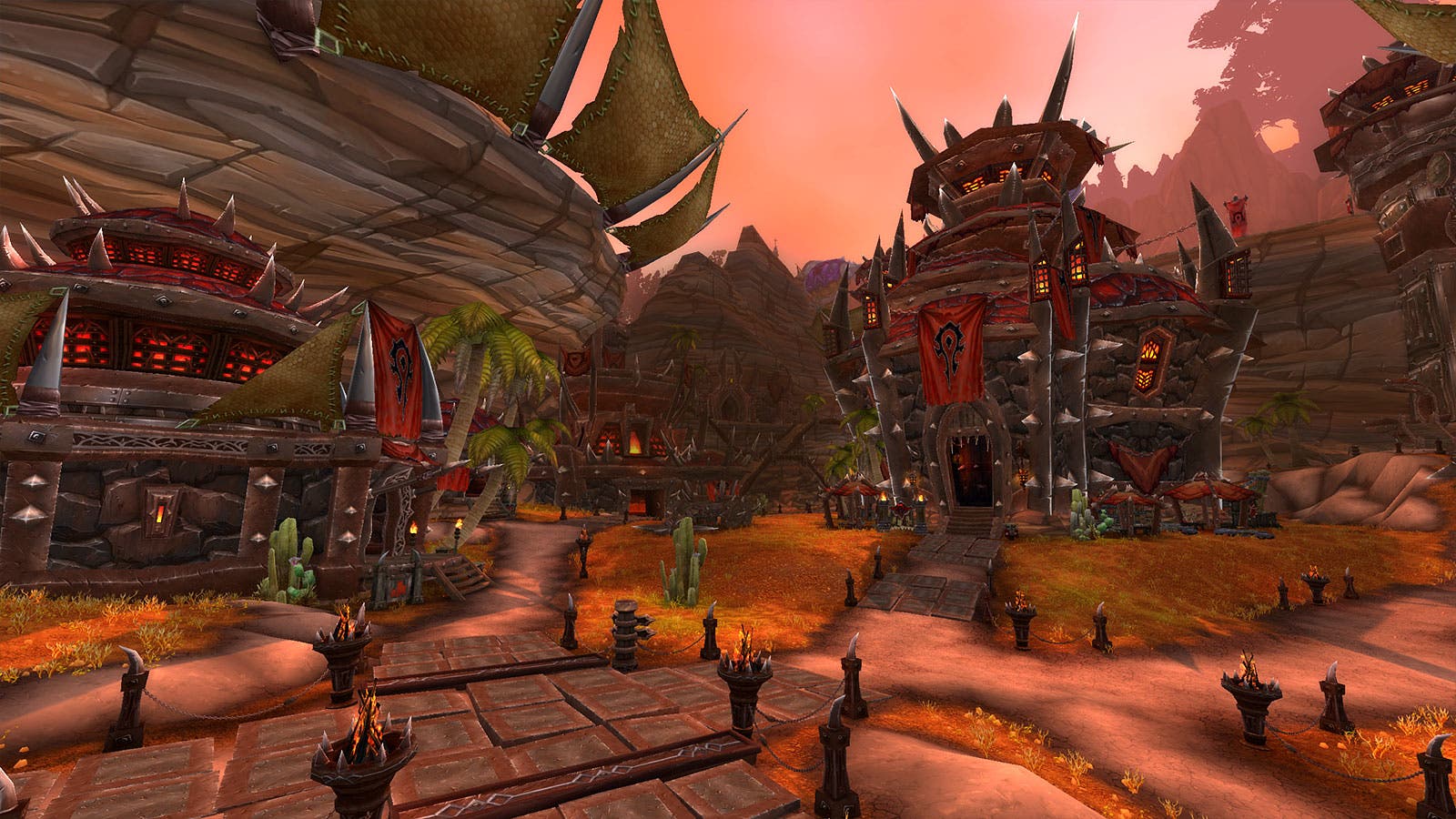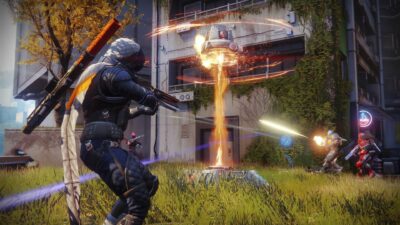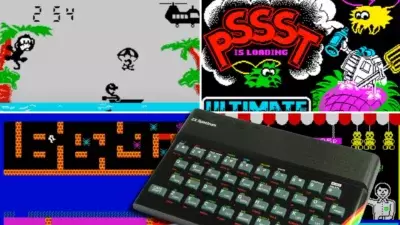
A city without citizens isn’t a city – it’s an empty husk. The urban experience is more about people, crowds, strangers, and countless interactions than it is about admiring buildings and using infrastructure. It’s why game cities also try to create the illusion of vibrant city lives. This is most easily achieved by populating a city with NPCs that move along predefined paths, automatically spawn in supposedly crowded squares, converge in places of interest, and generally act in a way that revolves around the experience of a single, carefully monitored player.
Using NPCs is, however, much simpler than trying to convince players to act as a believable civic crowd themselves. When gamers are involved in a make-believe world, new and different design challenges arise. What would once have been programmed now has to be recreated by people who are there to enjoy themselves rather than perform a specific task. Online worlds, MMOs, MMORPGs, and urban scaled hubs need to entice players to behave and move in ways that will create the illusion of a vibrant city.
THE ANCHORS
A handy concept we can steal from architecture – 20th-century shopping mall architecture, to be precise – is that of the anchor. This is a key attraction point, usually a well-known and large department store, that acts as a magnet both towards the mall itself and within it. What architects commonly did was place such anchors at opposite ends of a mall to create traffic flows between those two points. As both anchors were meant to strongly attract shoppers, designers correctly assumed that both would be visited by the average consumer, and thus a flow between them would be formed. Along this flow, visitors could be exposed to smaller retailers and even alternative activities such as coffee drinking, which in turn made the axis even more important. (You can find a brief but useful explanation of anchor stores at wfmag.cc/anchor-store.)
This planning logic can be lifted and used to energise game cities inhabited by sentient players. Designing a couple of expanded anchors – cohesive poles of interest built around dominant features and functions – and connecting them with a legible path will effectively force players to travel from one pole to the other (Figure 1). Placing activities, secondary functions, and minor points of interest on this path will add variety, strengthen the axis, and entice audiences to try more of the options and activities on offer.
The first choice when creating such a setup would be to consider one’s anchors; both the central edifice and its role, and the smaller buildings or less important but compatible functions surrounding it. You have to form two cohesive poles of compatible and strongly related activities. Each pole should be important on its own, but also supplement the in-game value of the other, ensuring that players will often need to travel from one to the next. It’s important not to place the anchors too far apart, and we must also keep in mind that what drives players in games isn’t what drives humans in their daily lives.

Anchor 1 (yellow) and Anchor 2 (green) cover important and different game needs, and create a flow of players between them.
So instead of anchoring local flows between a museum and a cinema or a theme park and a train station, in MMOs we will have to, for instance, strengthen the connection of a quest-giving hub and an auction house. The centres of our anchor nodes will have to be strongly related to the gameplay’s core and supported by useful elements in their vicinity. In an MMO, the first anchor pole could be built around an auction house for rare equipment, surrounded by shops and blacksmiths, whereas a second pole could be a ruler’s castle where the main quest is advanced, surrounded by healers and side quest givers.
COMPLICATING MATTERS
Once players have revisited these multiplayer spaces dozens if not hundreds of times, though, such spatial patterns will eventually either become too obvious, too dull, or both. To keep the player’s interest, try adding complexity to the space as well as more traversal options. These will showcase the subtleties of the game world and design, and perhaps allow for the use of secondary mechanics. The problem is that in both virtual and real spaces we tend to seek the simplest, shortest route between two points. Spectacle soon becomes banal, exploration gives way to efficiency and convenience, and unless there’s a reward, we won’t visit somewhere new or try out alternative paths.
The aforementioned anchors system may at least ensure a back and forth, but to remain interesting, virtual cities have to be dynamic. Periodic changes in daily cycles, seasonal festivals, shops closing or moving around for economic reasons, and significant changes during large in-world events can all stir things up, but shifting the urban geometry itself can also help. Try breaking up lines of sight, providing alternate and parallel routes between the anchors, and placing minor attractions just off the main axis. Those alternate routes should offer interesting, different options for players; if the main route supports the needs of the main quests, perhaps alternate paths could focus on side quests. A hunter’s alley as a parallel to the core axis would work nicely.

Orgrimmar uses several anchors/poles based on in-game functions to create a relatively complex flow within it.
Of course, there’s also the option of creating even more anchored axes. A secondary axis connecting different anchor poles, perpendicular to the movement of the main one, will create another strong flow. A square or other similar node at such an axial intersection would be a place of maximum activity (Figure 2). Tertiary axes from each of the two main anchors and towards specialised and relatively remote smaller poles can further emphasise the centrality of the city’s core, help with navigation within the city, and functionally interconnect all of the urban space.





